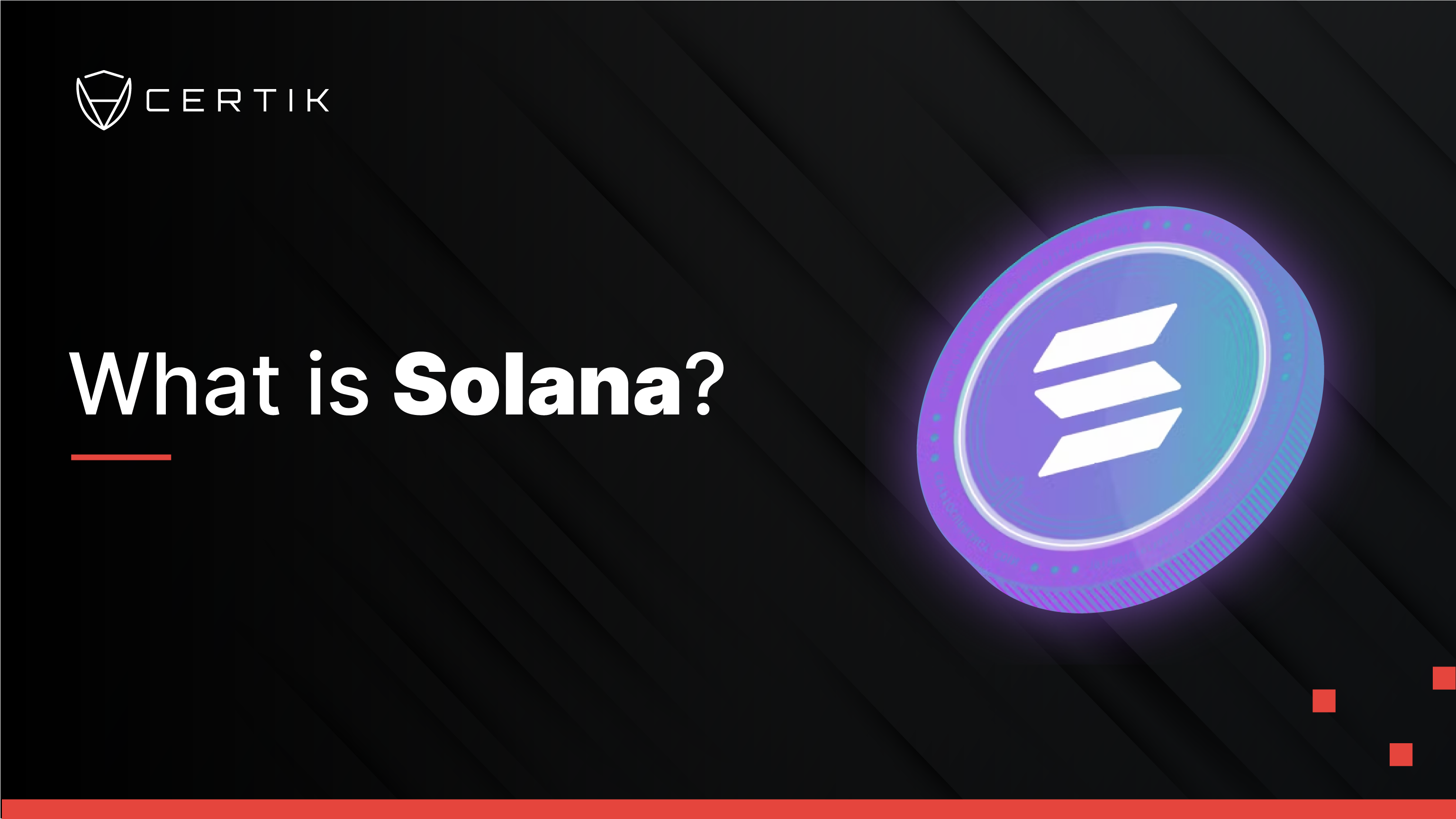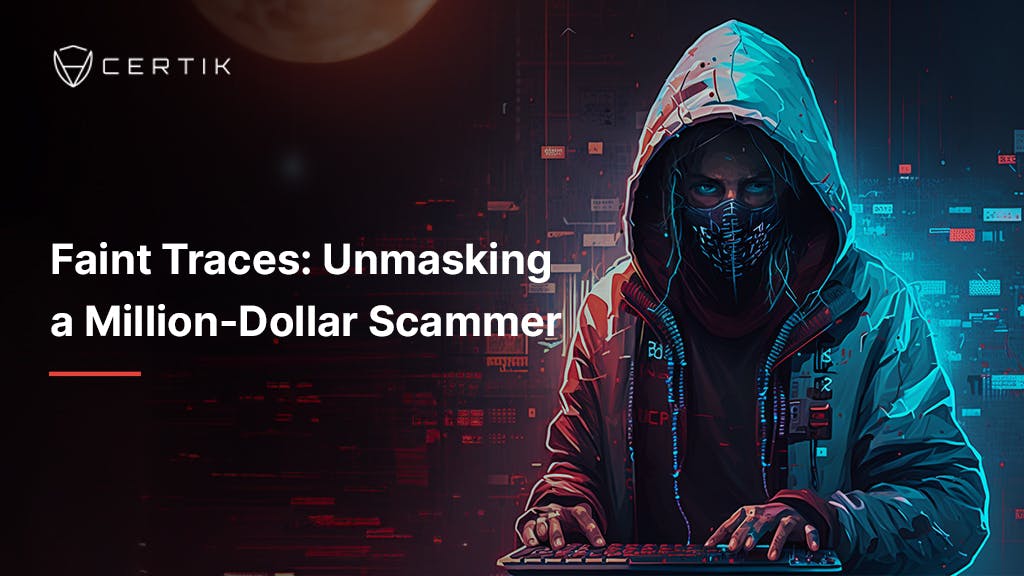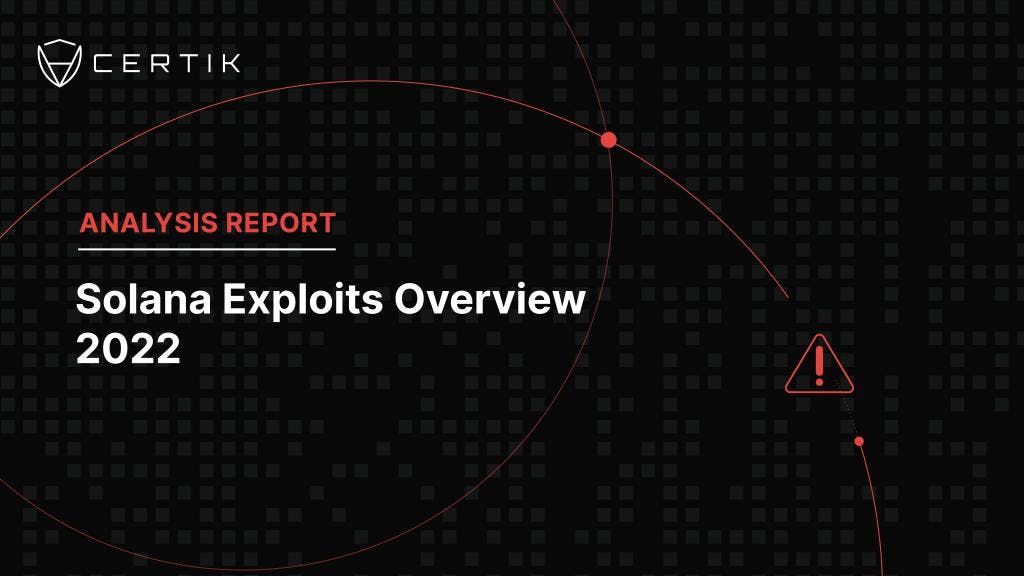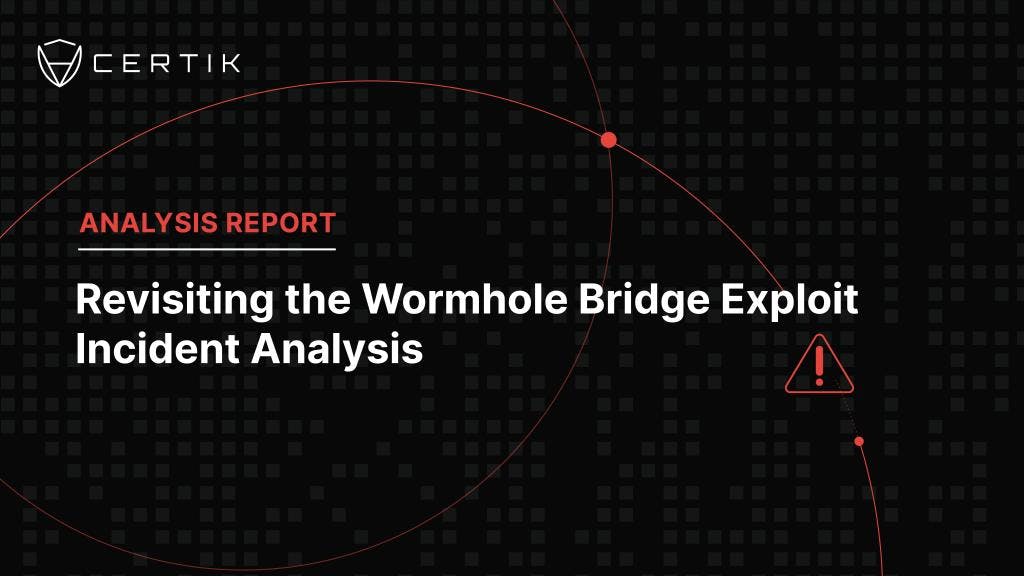Solana is a blockchain that performs many of the same functions as other smart contract-enabled chains – like Ethereum, Avalanche, Binance Chain, and others – while utilizing a novel approach to consensus about transaction ordering: Proof of History.

Solana is currently one of the largest blockchains by total value locked (TVL), which is a measure of the value of tokens held in DeFi applications on the chain. It is particularly notable for its throughput: Solana regularly surpasses 3,000 transactions per second (TPS), which dwarfs Ethereum’s current average of approximately 13 TPS.
So how does Solana achieve such scalability gains, and what else differentiates it from other smart contract blockchains?
Before we get into the technicals, for more details on CertiK’s work to secure the Solana ecosystem, check out our Solana smart contract auditing services page and the top Solana projects on the Security Leaderboard.
Proof of History
Rather than the more common Proof of Work (PoW) or Proof of Stake (PoS) consensus mechanisms used by most other blockchains, one of Solana’s defining characteristics is its implementation of Proof of History (PoH). It’s important to note that Proof of History is not a consensus protocol or anti-Sybil mechanism, but rather a method of “keeping time” across nodes. This allows for the nodes to agree on transaction ordering and the sequencing of events.
Proof of History shares some similarities with Proof of Stake and Proof of Work, along with some important differences. Just like Bitcoin’s implementation of PoW, Solana’s PoH utilizes SHA-256 encryption for hashing transaction data. The Bitcoin network affixes a timestamp to each block of transactions (approximately every 10 minutes) whereas Solana nodes hash timestamps into each transaction, both for that individual transaction and the one that came before it.
This process makes use of a high-frequency Verifiable Delay Functions (VDFs) to cryptographically imprint both a transaction hash and a count to the Solana blockchain.
This work is done by a master node, which then sends the proposed transaction hashes to the network of validator nodes, who verify the hashes and vote on whether or not they conform to the network rules and should be confirmed. If a proposed cryptographic proof is signed off on by a two-thirds majority of validator nodes, it is accepted. This is where Proof of Stake comes into play, as the validator nodes must put up a stake that can be slashed in the event of malicious behavior.
Proof of History is essentially an update to Proof of Stake; it doesn’t replace it entirely as a consensus mechanism.
For a deeper dive into how this all works, keep an eye out for our upcoming technical review of Proof of History. Our team of auditors can work just as easily with Proof of History systems as straightforward implementations of Proof of Stake, so don’t hesitate to get in touch with us about a Solana smart contract audit.
The Solana Ecosystem

Decentralization
Validating the Solana network is computationally expensive. Minimum hardware requirements include a 12 core/24 thread CPU and at least 128GB of RAM. While this is what makes it possible for the network to process such a high number of transactions per second, it also means that running a node is out of the range of just about all hobbyists. This explains Solana’s total node count of 1,702 compared to Ethereum’s 9,222.
Decentralization is a tricky thing to measure – and there are other variables to take into account (such as the geographical distribution of nodes and the cloud infrastructure they rely on) – but it’s important to take a range of metrics into account when comparing networks.
Solana provides a library of content detailing all sorts of ways to get started on the network, including how to run a validator node, how to manage a wallet, how to launch an SPL token, and more. This wealth of information makes it easy to get involved with the network, and greater adoption means greater decentralization.
Scalability
Another metric to compare is transaction cost. The average cost of a transaction on Solana is $0.00025, a fraction of Ethereum’s $0.66 average at the time of writing.

This lower fee environment has helped attract lesser-capitalized users to the Solana ecosystem, especially when gas surges in 2021 led to transactions on the Ethereum baselayer spiking into the hundreds of dollars for more complicated smart contract interactions.
Whereas Ethereum has turned towards Layer 2 scaling solutions and a future implementation of sharding to fix its scalability issues, Solana touts its built-in scalability as a major feature of the network. “Solana ensures composability between ecosystem projects by maintaining a single global state as the network scales,” the project’s homepage reads. “Never deal with fragmented Layer 2 systems or sharded chains.”
A unified network helps developers build future-proof applications, while users can take advantage of concentrated liquidity in DeFi and Web3 applications without having to worry about bridging funds to multiple sidechains or L2s.
Security
Solana’s implementation of Proof of History is a novel method of securing the network’s baselayer. When it comes to securing the code of applications built on Solana, nothing beats a Solana smart contract audit. CertiK’s Solana smart contract audits offer the highest level of protection for Solana-based Web3 application code. Leveraging cutting edge AI technology and insightful analysis from our expert team of auditors, in computer science, our Solana smart contract audits are tailor-made for the specificities of the Solana architecture, providing nuanced, incisive, and actionable insights for Web3 teams.
While it’s an essential first step, meaningful security goes beyond pre-deployment smart contract code auditing. CertiK’s Security Suite includes Skynet’s 24/7 monitoring service, which works around the clock to detect suspicious activity and alert teams early, while there’s still time to mitigate risk.
As part of our mission to raise the standard of transparency and security across the entire Web3 industry, CertiK has recently introduced the option of KYC verification to our Solana smart contract audit process. Using rigorous human verification processes performed by personnel with years of law enforcement and military experience, CertiK KYC helps Solana projects prove their authenticity and demonstrate a verifiable commitment to transparency.
The SOL Token
SOL is the token used to pay for activity on the Solana network, just like ETH is used to pay for activity on Ethereum. This includes transferring tokens, interacting with smart contracts, and rewarding validators for their work.
Luckily, Solana users shouldn’t be spending too much of their hard-earned SOL on transaction fees, as the project has committed to keeping transaction fees under $0.01. Permanently. This incentivizes adoption of the chain by users who’d rather put their digital assets to work rather than worrying about surging gas fees. And it’s attractive to developers, as deploying contracts requires complicated transactions that can get prohibitively expensive on less-scalable networks. Overall, it’s a win-win for users and developers alike.
Top Solana Projects
For a list of Solana projects that you can be sure have demonstrated a commitment to security, head on over to the Security Leaderboard or take a look at our Solana smart contract audit page. From either of these locations, you can sort projects by blockchain ecosystem.

Solana has NFT projects, DEXs, lending protocols, even decentralized music streaming services and a host of blockchain games.
We’ll be showcasing more Solana-related content throughout the month of November, so stay tuned for technical deep dives, comparison pieces, and reviews of major events.
If you’re a Web3 project owner interested in a Solana smart contract audit, don't hesitate to get in touch with us.



